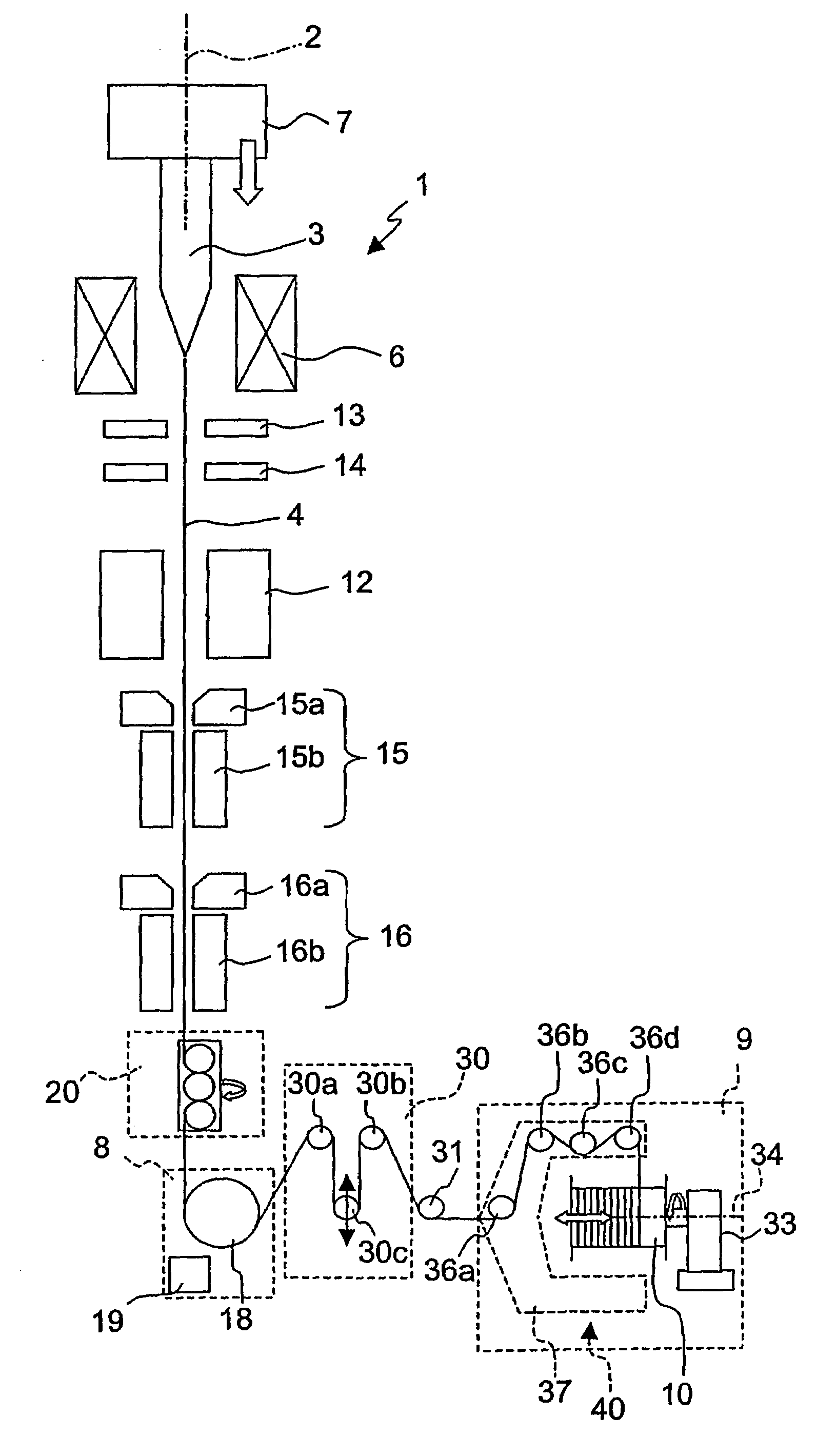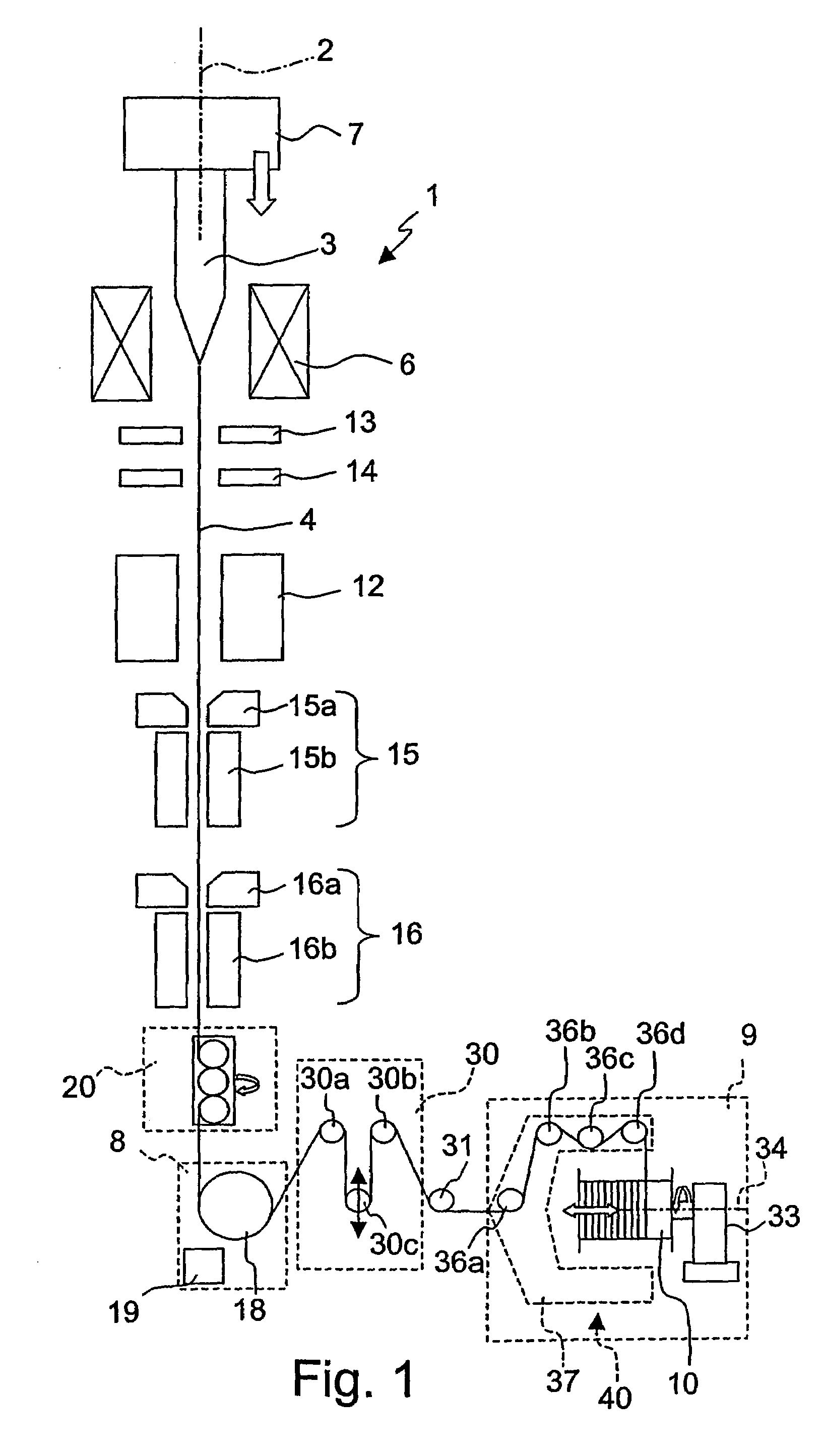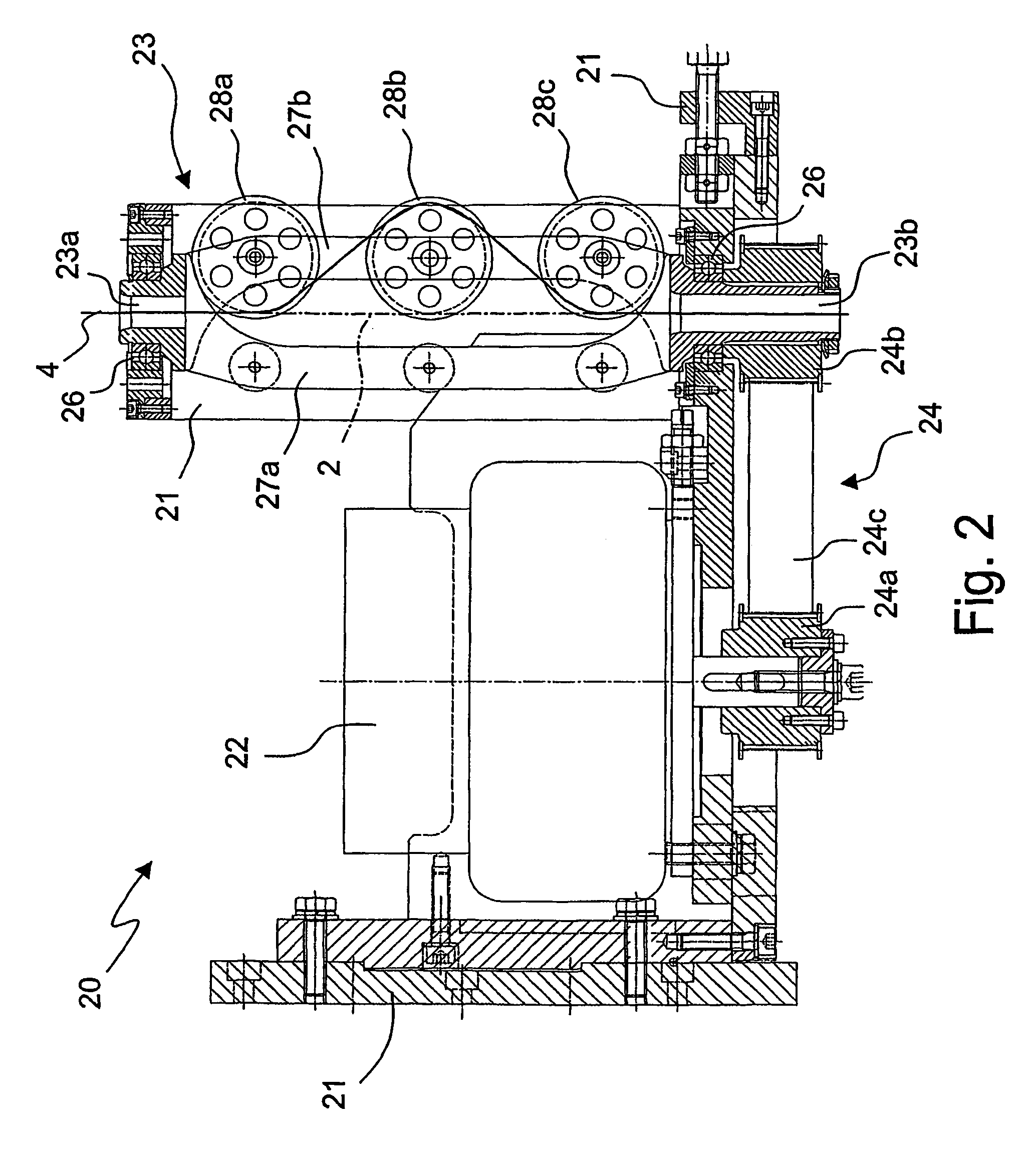Optical fiber having a low polarization mode dispersion and process and apparatus for producing it
a technology of optical fiber and dispersion mode, which is applied in the field of process for producing a low polarization mode dispersion optical fiber, can solve the problems of pulse spreading, birefringence being detrimental, and the symmetry of the core cylindrical may be disrupted
- Summary
- Abstract
- Description
- Claims
- Application Information
AI Technical Summary
Benefits of technology
Problems solved by technology
Method used
Image
Examples
examples
[0111]In a first experiment, the Applicant has compared the PMD of a unspun fiber with the PMD of a fiber spun at 7.3 turns / m. Two corresponding fibers of 10 km length, consistent with the ITU-T G.652 specification, were drawn from the same preform (obtained with the OVD deposition technique). The experiment was carried out at a typical drawing speed.
[0112]After measuring the residual twist of the spun fiber with the above-described technique, the fiber was cut in 1-km spans associated with different residual twists. In practice, a first 1-km span was wound on a smaller bobbin with a predetermined detwist, then the fiber was cut and a second 1-km span was wound on another smaller bobbin with a different detwist, and so on. The PMD of the different spans was then measured.
[0113]FIG. 7a shows the PMD of six 1-km spans of spun fiber having different residual twists, compared to the PMD of the unspun fiber. The Figure shows the improvement obtainable in terms of PMD by twisting the fibe...
PUM
| Property | Measurement | Unit |
|---|---|---|
| Intrinsic viscosity | aaaaa | aaaaa |
Abstract
Description
Claims
Application Information
 Login to View More
Login to View More - R&D
- Intellectual Property
- Life Sciences
- Materials
- Tech Scout
- Unparalleled Data Quality
- Higher Quality Content
- 60% Fewer Hallucinations
Browse by: Latest US Patents, China's latest patents, Technical Efficacy Thesaurus, Application Domain, Technology Topic, Popular Technical Reports.
© 2025 PatSnap. All rights reserved.Legal|Privacy policy|Modern Slavery Act Transparency Statement|Sitemap|About US| Contact US: help@patsnap.com



